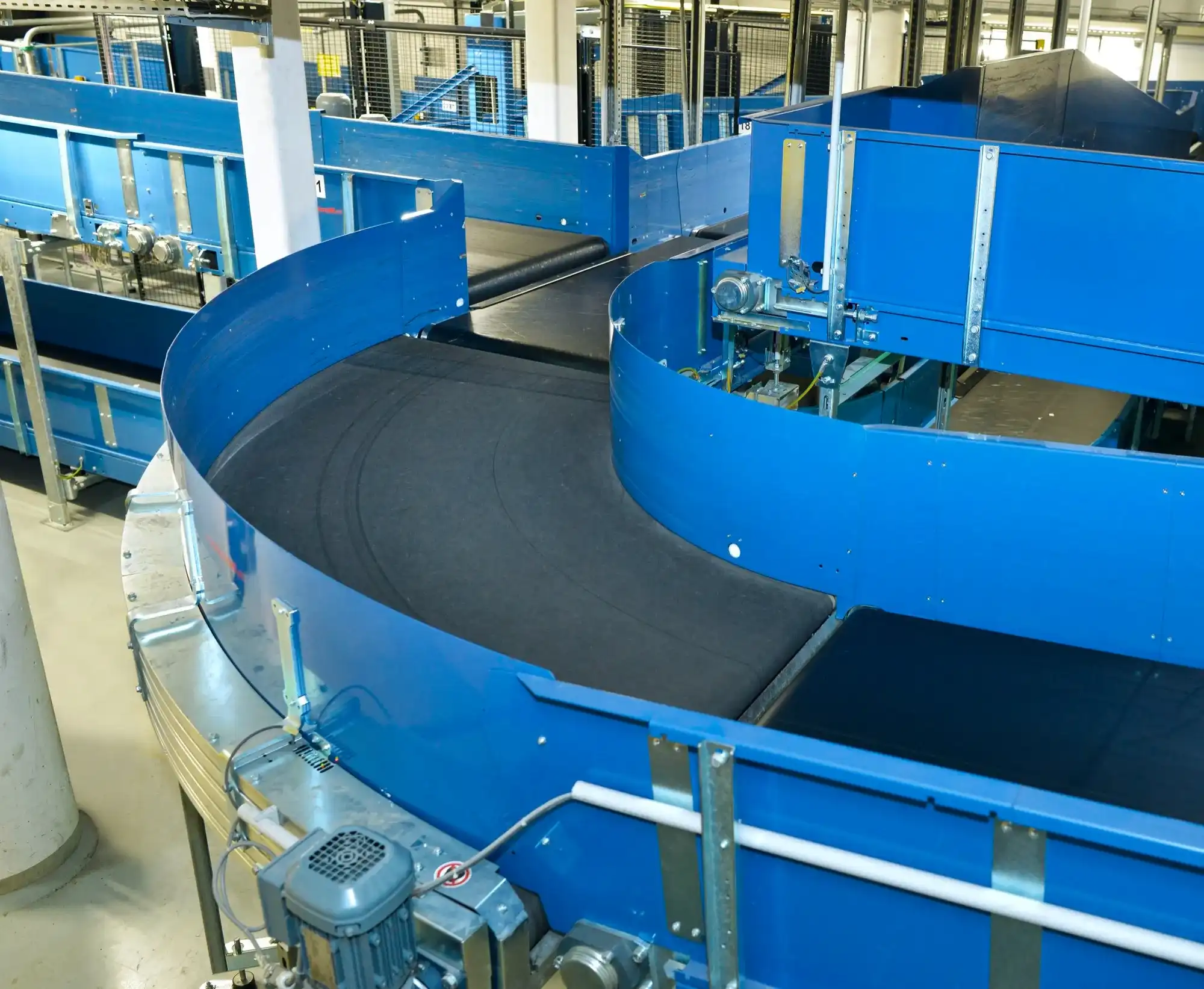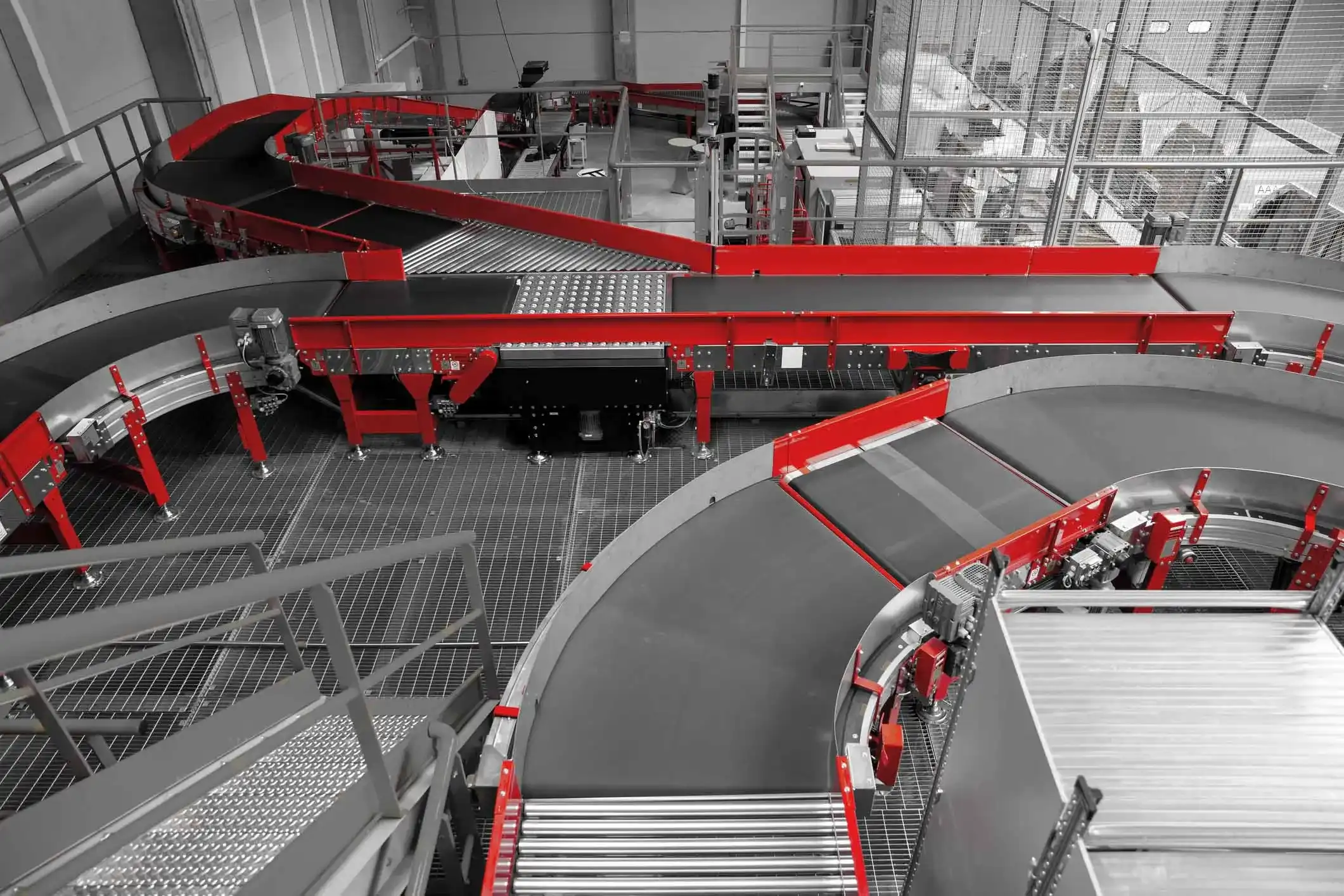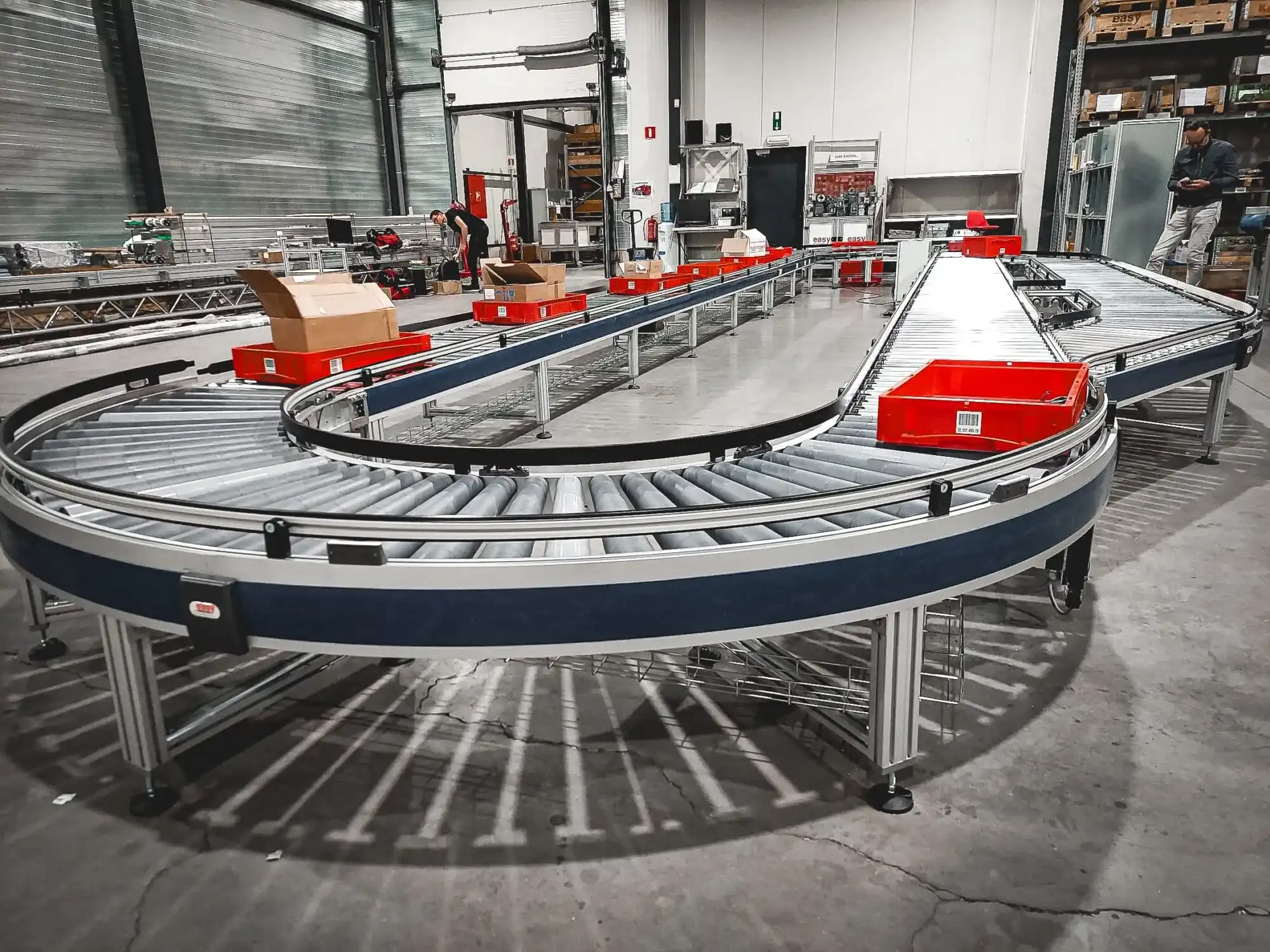What is the definition of a conveyor?
A conveyor is a mechanical device used to move materials or goods from one location to another, typically within a manufacturing, warehousing, or distribution setting. Conveyors are essential for automating processes and improving efficiency in material handling.
Key Features of a Conveyor:
- Movement Mechanism: Utilizes belts, rollers, or chains to transport items.
- Power Source: Can be powered manually, electrically, or by gravity.
- अनुप्रयोग: Commonly used in industries like automotive, food processing, and logistics.
- Types: Includes belt conveyors, roller conveyors, and screw conveyors, among others.
Conveyors streamline operations by reducing manual labor and increasing throughput, making them crucial components in modern industrial systems.
What are the basics of conveyor?
Conveyors are mechanical systems used to transport materials or goods from one location to another. They are essential in industries like manufacturing, logistics, and mining for efficient material handling. Key components include the conveyor belt, motor, pulleys, and rollers.
Key Components of a Conveyor System:
- Conveyor Belt: The flexible, continuous loop that carries materials.
- Motor: Powers the conveyor belt.
- Pulleys: Guide and support the belt’s movement.
- Rollers: Reduce friction and support the belt.
Types of Conveyors:
- Belt Conveyors: Most common, ideal for transporting goods over long distances.
- Roller Conveyors: Utilize rollers and are suitable for heavy items.
- Chain Conveyors: Use chains to move materials, often used in automotive industries.
Advantages:
- Efficiency: Reduces manual labor and speeds up processes.
- बहुमुखी प्रतिभा: Can move a variety of materials.
- Scalability: Systems can be customized to fit different needs.
Understanding these basics ensures effective use and maintenance of conveyor systems, optimizing operational efficiency.
What is the purpose of a conveyor?
The primary purpose of a conveyor is to efficiently move materials from one location to another within a defined space. Conveyors are used to transport goods, materials, and products in various industries, including manufacturing, warehousing, and distribution.
Key Functions of a Conveyor:
- Material Handling: Automates the movement of bulk materials, reducing manual labor and increasing productivity.
- Time Efficiency: Speeds up the process of transporting items, saving time and operational costs.
- सुरक्षा: Minimizes the risk of injury by reducing the need for manual lifting and handling.
- Consistency: Ensures a steady and reliable flow of materials, improving overall process efficiency.
Common Types of Conveyors:
- Belt Conveyors: Use belts to move goods horizontally or at an incline.
- Roller Conveyors: Utilize rollers for moving items, typically in warehousing.
- Chain Conveyors: Employ chains to move heavy loads in industrial settings.
Conveyors streamline operations by automating the transport process, enhancing safety, and ensuring consistent material flow.
How does a conveyor work?
A conveyor system works by using a series of belts, rollers, or chains to move objects from one point to another, typically within a manufacturing or distribution environment. The motion is powered by motors or manual effort, allowing for efficient, automated transport of goods.

Key Components and Operation:
- Belt or Chain: Moves goods along the conveyor path.
- Motor: Provides power to the belt or chain.
- Rollers or Pulleys: Guide and support the belt or chain.
- Frame: Supports the entire system structure.
Working Principle:
- Power Source: An electric motor or manual effort initiates movement.
- Transmission: Power is transmitted to the belt or chain.
- Movement: The belt or chain moves, carrying items along the conveyor’s path.
- Control System: Regulates the speed and direction of the conveyor.
अनुप्रयोग:
- Manufacturing lines
- Warehouses
- Airports (luggage handling)
- Food processing industries
Conveyors streamline operations by efficiently moving products, reducing manual labor, and increasing productivity.
What are the benefits of conveyors?
Conveyors offer numerous advantages, enhancing efficiency and safety in material handling processes. They automate the transportation of goods, reduce manual labor, and minimize human error, leading to increased productivity and consistent workflow in various industries.

Key Benefits:
- Increased Efficiency: Automates the movement of materials, reducing delays and improving overall productivity.
- Cost-Effective: Reduces labor costs by minimizing the need for manual handling.
- Enhanced सुरक्षा: Lowers the risk of workplace injuries associated with manual lifting and transportation.
- Consistency: Provides a steady and reliable flow of goods, maintaining production line balance.
- Flexibility: Can be customized to fit specific operational needs and integrated with other automated systems.
Operational Advantages:
- Speed Control: Adjustable speeds to match different processing requirements.
- Scalability: Easily expandable to accommodate business growth.
- बहुमुखी प्रतिभा: Suitable for a wide range of materials and industries, from manufacturing to packaging.
By integrating conveyors, businesses can streamline operations, enhance safety, and achieve significant cost savings.
What Are the Types of Conveyors?
There are several types of conveyors, each designed for specific tasks and applications. The main types include belt conveyors, roller conveyors, chain conveyors, and screw conveyors.、
Types of Conveyors:
- Belt Conveyors:
- Usage: Transporting goods over long distances.
- Components: A continuous belt, pulleys, and a motor.
- Roller Conveyors:
- Usage: Moving items with flat bottoms, often in warehouses.
- Components: Rollers and a frame.
- Chain Conveyors:
- Usage: Handling heavy loads, such as pallets.
- Components: Chains, sprockets, and a motor.
- Screw Conveyors:
- Usage: Moving granular or liquid materials.
- Components: A helical screw blade inside a tube.
Each type of conveyor has unique features that make it suitable for specific industrial tasks, ensuring efficient material handling.
How Do Hydraulic Conveyors Work?
Hydraulic conveyors operate by using a liquid medium, typically water, to transport bulk materials through a pipeline. The materials are mixed with water to form a slurry, which is propelled by hydraulic pressure generated through pumps.
Key Components and Process:
- Material Loading: Bulk materials are loaded into the conveyor system.
- Slurry Formation: The materials are mixed with water to create a slurry.
- Pumping Mechanism: High-pressure pumps push the slurry through the pipeline.
- Transport and Discharge: The slurry travels through the pipeline and is discharged at the destination, where the materials are separated from the water.
Advantages:
- Continuous Operation: Ideal for long-distance material transport.
- Efficient: Reduces manual handling and minimizes material spillage.
- Versatile: Suitable for various bulk materials, including coal, sand, and gravel.
Hydraulic conveyors are commonly used in mining, dredging, and construction industries for efficient and continuous material transport.


